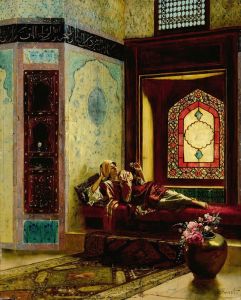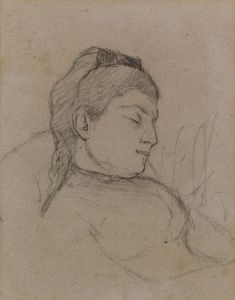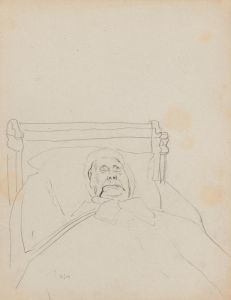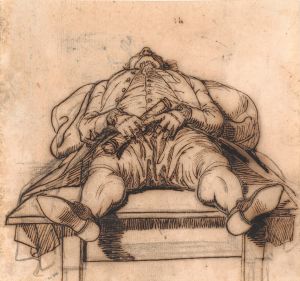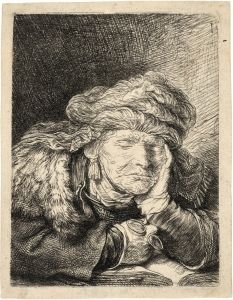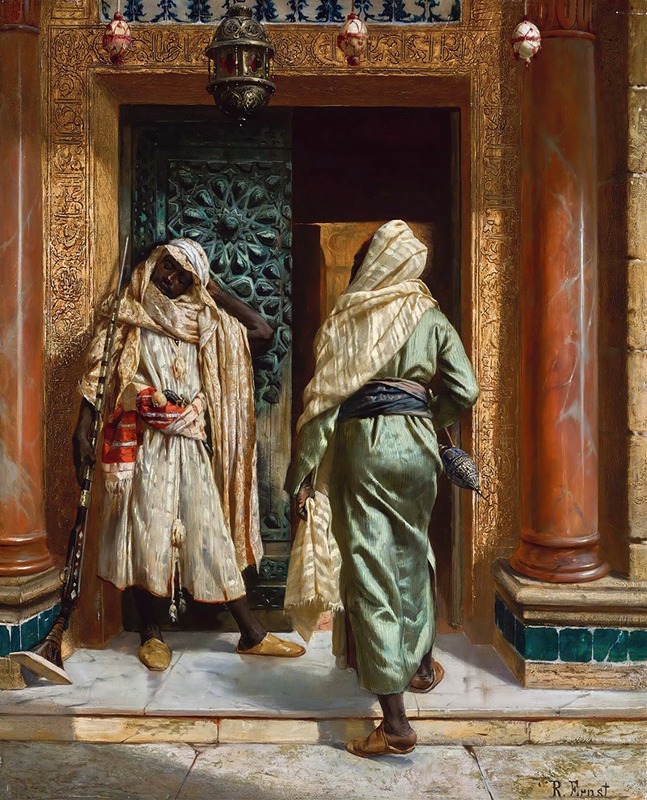
The Dozing Guard
A hand-painted replica of Rudolf Ernst’s masterpiece The Dozing Guard, meticulously crafted by professional artists to capture the true essence of the original. Each piece is created with museum-quality canvas and rare mineral pigments, carefully painted by experienced artists with delicate brushstrokes and rich, layered colors to perfectly recreate the texture of the original artwork. Unlike machine-printed reproductions, this hand-painted version brings the painting to life, infused with the artist’s emotions and skill in every stroke. Whether for personal collection or home decoration, it instantly elevates the artistic atmosphere of any space.
Rudolf Ernst was an Austrian painter known for his Orientalist works, which often depicted scenes inspired by the cultures and settings of the Middle East and North Africa. "The Dozing Guard" is one of his notable paintings, showcasing his skill in capturing intricate details and atmospheric settings.
Rudolf Ernst was born in Vienna in 1854 and studied at the Academy of Fine Arts in Vienna. He later moved to Paris, where he became part of the Orientalist movement, a genre that romanticized and depicted the Eastern world through Western eyes. Ernst's works are characterized by their vibrant colors, meticulous attention to detail, and the ability to evoke the exoticism and allure of distant lands.
"The Dozing Guard" exemplifies Ernst's fascination with Orientalist themes. The painting portrays a guard, presumably in a Middle Eastern or North African setting, caught in a moment of repose. The guard is depicted in traditional attire, complete with a turban and richly decorated garments, which are rendered with Ernst's characteristic attention to texture and pattern. The setting is likely an opulent interior, suggested by the presence of luxurious textiles and ornate architectural elements.
Ernst's use of light and shadow in "The Dozing Guard" enhances the sense of tranquility and timelessness in the scene. The guard, seated and seemingly at ease, is bathed in soft light that highlights the intricate details of his attire and surroundings. This careful play of light not only adds depth to the composition but also draws the viewer's eye to the central figure, emphasizing the theme of quiet contemplation.
The painting reflects the broader Orientalist trend of the 19th century, where Western artists depicted Eastern subjects with a blend of fascination and idealization. While these works often provide insight into the Western perception of the East during this period, they also raise questions about cultural representation and the dynamics of power and exoticism.
Rudolf Ernst's work, including "The Dozing Guard," remains significant for its artistic merit and its role in the history of Orientalist art. His paintings are appreciated for their technical excellence and their ability to transport viewers to a world of imagined splendor and mystery. Today, Ernst's works are held in various private collections and museums, where they continue to be studied and admired for their contribution to the Orientalist genre.
In summary, "The Dozing Guard" is a testament to Rudolf Ernst's skill as a painter and his engagement with the themes of Orientalism. Through his meticulous attention to detail and his ability to capture the essence of a moment, Ernst invites viewers to explore the rich tapestry of cultures and settings that inspired his work.












